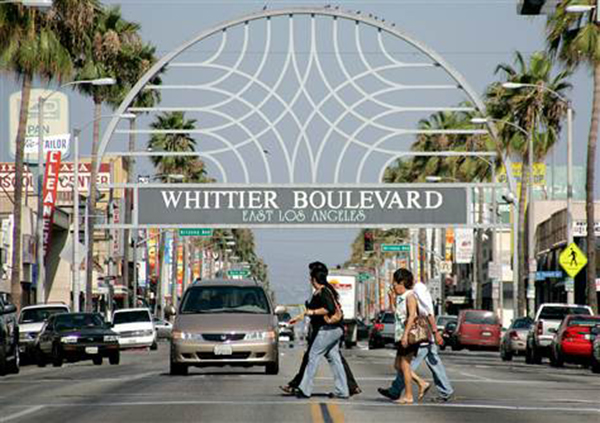By Ashley Orona, Contributing Writer
EAST LOS ANGELES — A green zone program that would create new standards for hazardous businesses to become environmentally sustainable is under consideration in East Los Angeles
The Los Angeles County Department of Regional Planning hosted a virtual community meeting on July 16 to discuss the program that also would be used in other unincorporated parts of the county that are disproportionately impacted by environmental hazards.
Under the green zone program, the Regional Planning Department would make changes to the Los Angeles County general plan and zoning code that would require businesses that use hazardous substances to comply with the new standards. The presentation laid out a three-year, five-year and 10-year plan businesses can use to comply with the new standards.
The project’s goal is to promote environmental justice in areas that have been historically and disproportionately impacted by polluting sources.
East Los Angeles and the Florence-Firestone in South Los Angeles are considered pilot communities for the project.
According to the county, East Los Angeles residents have disproportionately experienced health issues linked to the environment. According to a report by First 5 L.A., a public agency focusing on fostering early childhood development, the problems are linked to overcrowded housing, ambient air pollution from nearby freeways and commercial businesses and overflowing trash and pests.
During the July 16 meeting, held on Zoom and Facebook Live, Regional Planning Department staff presented a schedule of compliance for businesses that are expected to make changes based on the new policies. The specific time allotted to the business for these changes depends on the types of improvements and permits needed.
For example, the county would grant a business three years to put up a no-parking sign and five years for a business to re-do its landscaping to allow for more green space.
Up to 10 years would be granted to a business that needs to enclose its operations to separate any environmentally hazardous activities from the rest of the community.
Some East L.A. residents raised concerns about the timeline, saying that setting such long benchmarks will not protect residents.
“I hear 10 years and in 10 years my daughters are gonna be 16 and 18 years old, and what you’re basically telling me is that this policy isn’t for them,” Mark Lopez said. “That type of timeline just seems it’s skipping a generation and it’s kind of a detriment to the effort the community has put in to be like ‘Cool, you did this, but you might be away at college and you might be gentrified out of this community by the time you start to see these benefits.’”
“Three years to put up a sign is laughable,” Tiffany Sanchez added. “Ten years gives industries enough time to pollute the area and get away scot-free; this doesn’t do anything for the families that live there.”
County employees acknowledged the community’s concerns on the timeline, with project lead Tahirah Terris mentioning that conversations are happening internally about how they can change that. She reminded people that the presentation was not the final draft and that there would be another version issued to the public after community meetings are completed.
The county Board of Supervisors initiated the project in 2015, with the Regional Planning Department collaborating with community members and organizations for the last few years to identify five types of environmentally hazardous businesses.
The businesses include auto repair, recycling, warehouses, metal manufacturing and other types of manufacturing. In East Los Angeles, those types of businesses can be found in close proximity to homes, parks, schools and churches.
County officials said that the program will identify resources for existing businesses and recommend incentives programs to help small businesses be “cleaner” neighbors. It also will improve coordination among local, regional, state and federal environmental agencies. The program will not measure pollutant emissions, shut down businesses or act as a clean-up program.












